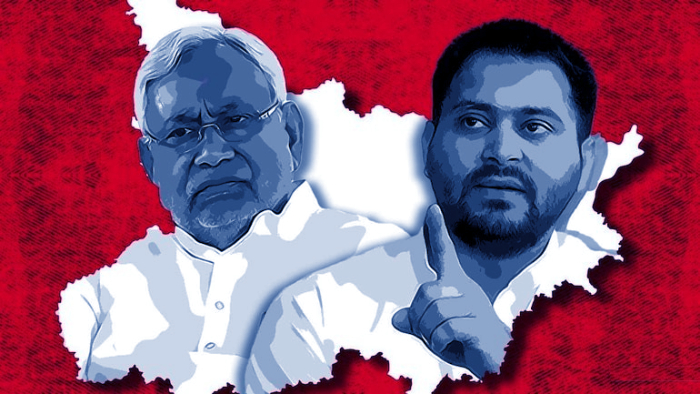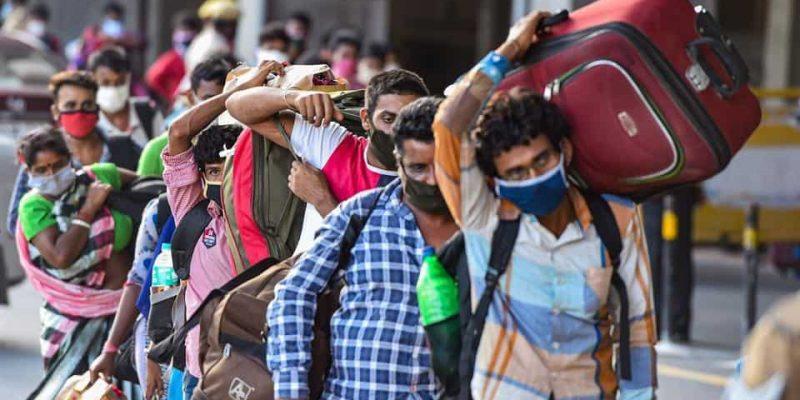Election commission of India recently concluded the Bihar election. The counting has begun in 55 centres across the 38 districts. While the updates are arriving for the state election, the importance of someone’s popularity cannot be ignored in a state like Bihar in the context of election.
It has been found that in many villages in Bihar which are disconnected from the cities or other urban regions, people still say that they will vote for LP Yadav. In the state’s remote places one can often hear Lalu’s name, despite the former chief minister having been in jail for three years and being missing from the billboards. People refer to his son when told that Yadav Sr. is in jail now. Tejashwi has remained physically present, fanning out to campaign among the people in the remotest parts of Bihar. Even then people refer his father’s name.
If one observes closely, Bihar’s social set-up reveals that Lalu’s charm is, to a great extent, has still remained undaunted among marginalized sections. These marginalized groups had suffered heavily during the pre-Lalu era and had felt ‘liberated’ by Lalu’s aggressiveness against their ‘oppressors’ at the ground level.
Although he had lost power to the JDU-BJP in 2005, he succeeded in retaining his political resources to a great extent. A mechanical Nitish, of course, dented his monolithic hold over the backward classes by giving special preferences to non-Yadav backward classes and reaped political dividends too. But the current CM has never succeeded in breaking the emotional appeal that Lalu has had with the Yadavs (the single largest caste in Bihar) and also with the other marginalized sections that he had given a voice to.
Tejashwi Yadav, from this particular election, has nothing to lose and everything to gain given the role played by his father in the state politics. Ironically, his emergence began after Nitish had disowned Tejashwi and his party in July 2017, and returned to the BJP. This crisis gave him the opportunity to question Nitish’s action, and also learn about the ropes of state politics. Tejashwi has led the Rashtriya Janata Dal (RJD) from the front, forged a tight pre-poll coalition with the Left parties and Congress, and mounted an energetic campaign on the real issues of “kamaai, padhai, dawai, sichai” (income, education, medicine, irrigation), the inadequacy of which has plagued Bihar for decades.
The Counting of votes in the three-phased Bihar assembly election is going on as the results would be declared today. Despite the popularity factor of LP Yadav and his son, the initial counting points towards a different picture.
The NDA with the BJP-JD(U) is surging ahead of the Mahagathbandhan in Bihar polls (as found in the first four hours of counting) as the counting of votes for the 243 assembly seats is underway. After the initial trends showed a close neck to neck contest between the two rival alliances, the incumbent Nitish Kumar-led Janata Dal-United and BJP alliance seems to be pulling its weight, leading in 128 seats, well above the halfway mark of 122. The BJP is ahead in 71 seats, while the JDU is leading in 51 seats. Tejashwi Yadav’s Rashtriya Janata Dal-led Mahagathbandhan of 5 parties is now leading in 108 seats with the party (RJD) ahead in 58 seats. The Congress is ahead in 22 seats. Among other major parties, the LJP is ahead in 4 seats. This polls which is the first state assembly election in India amid the COVID-19 pandemic, will decide the fate of the incumbent Nitish for the fourth term. The three-phased elections ended on November 7. The anti-incumbency sentiments and the Nitish government’s handling of COVID-19 are factors that could play a major role this time.





